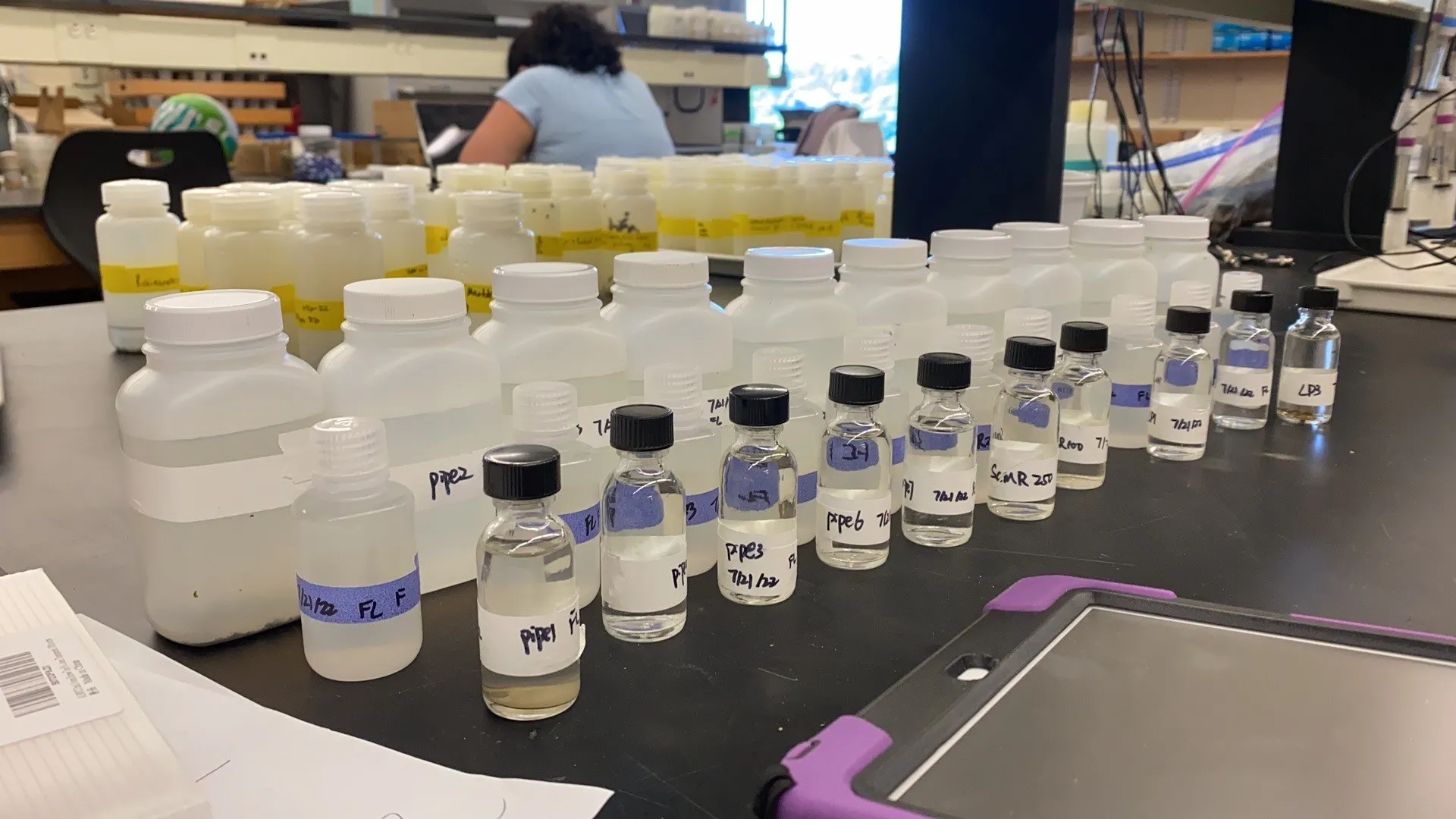Side Effects of Salt
CEEDS Research
Professor Amy Rhodes works to study the impact of campus de-icing protocols.
Published July 8, 2024
As a student at Smith in the late 1980s and early 1990s, Amy Larson Rhodes fell in love with geology. She attributes this in part to the professors who challenged her, broadened her vision, and cared deeply about her education. She had no idea, then, that just a few years later, she would become one of those professors herself. In what she calls “the dream scenario,” Rhodes returned to Smith as a visiting professor only five years after her 1991 graduation, with a new Ph.D. in geochemistry from Dartmouth in hand. A few years later, after the minor in environmental science and policy had been established, Rhodes was hired into a new tenure-track line in environmental geology and has remained at Smith ever since.
Rhodes notes that one crucial difference between her two eras at Smith is the increased number of courses about the environment. When she was a student, she could practically count the environmentally-focused courses offerings on one hand. Now, the environmental science and policy program is one of the most popular at Smith, and Rhodes remains deeply involved.
In graduate school, Rhodes primarily studied the geochemistry of ore deposits. Since she’s been at Smith, her focus has shifted to aqueous geochemistry, meaning that she thinks primarily about water chemistry, water quality, and soil. One recent project has looked at the impact of road salt contamination on local waterways. Early in her Smith faculty career, Rhodes was involved in an interdisciplinary project about the Mill River watershed where faculty and students studied the effects of both natural and human activity on the watershed. One of the biggest pollutants, it turned out, was road salt. That early project spurred Rhodes’ continued interest in this persistent issue. As a CEEDS faculty fellow in 2022–23, Rhodes advised Frances Li ‘23J on her environmental science and policy honors thesis, which explored the impact of road salt contamination from campus roads and walkways on Lyman Pond, the Mill River, and associated soils and sediments.

Water samples from around campus being tested in the lab.
Rhodes notes that Smith has been “fairly thoughtful about its de-icing protocols.” Currently Smith’s protocol for ice treatment in winter has three parts: a liquid deicing agent pretreatment, a magnesium chloride application on steps and walkways near buildings and the botanic garden, and a sand-salt mixture on the roads. Smith’s facilities department contends that the liquid pretreatment reduces the amount of salt and sand they need to use later. Rhodes doesn’t disagree but also points out that “the effects of this pre-treatment on water chemistry are unknown.” In the summer of 2022, Rhodes and Li set out to investigate.
Rhodes and Li took samples from the pipes that collect water from the storm drains around campus. Then, they analyzed the samples to see what the water chemistry looked like. What they found was “very high concentrations of chloride that would come from de-icing agents,” primarily sodium chloride from the sand-salt mix but also detectable levels of magnesium chloride, presumably from the other two applications. One pipe in particular had “extraordinarily high” sodium chloride levels, and Rhodes and Li realized that it “was one of the pipes that would have collected some storm runoff from storm drains on Elm Street,” which is treated by the City of Northampton rather than by Smith. Even though, it hadn’t been in their original plan, Rhodes and Li went on to sample water from the traps of the storm drains as well as from the pipes. Li eventually created what Rhodes calls a “heat map of the water chemistry in those storm drains.”
Perhaps not surprisingly, the conclusion that Rhodes and Li reached is that the road salt problem is an “intractable” one with no easy fix. No matter how careful Smith is with its ice treatment protocols, the fact that runoff from nearby Northampton roads also eventually ends up in Smith’s ponds, means that there is no simple solution. Still, Rhodes hopes that her work with Li might have an impact: “You could think of Smith as a little tiny town in a way and if we could demonstrate that there are ways to manage snow and ice that use less salt that could be a model.” She adds, “Maybe that's too Pollyanna-ish. But at least if we can try to understand what's going on here, then that might help us understand what's going on someplace else.”

